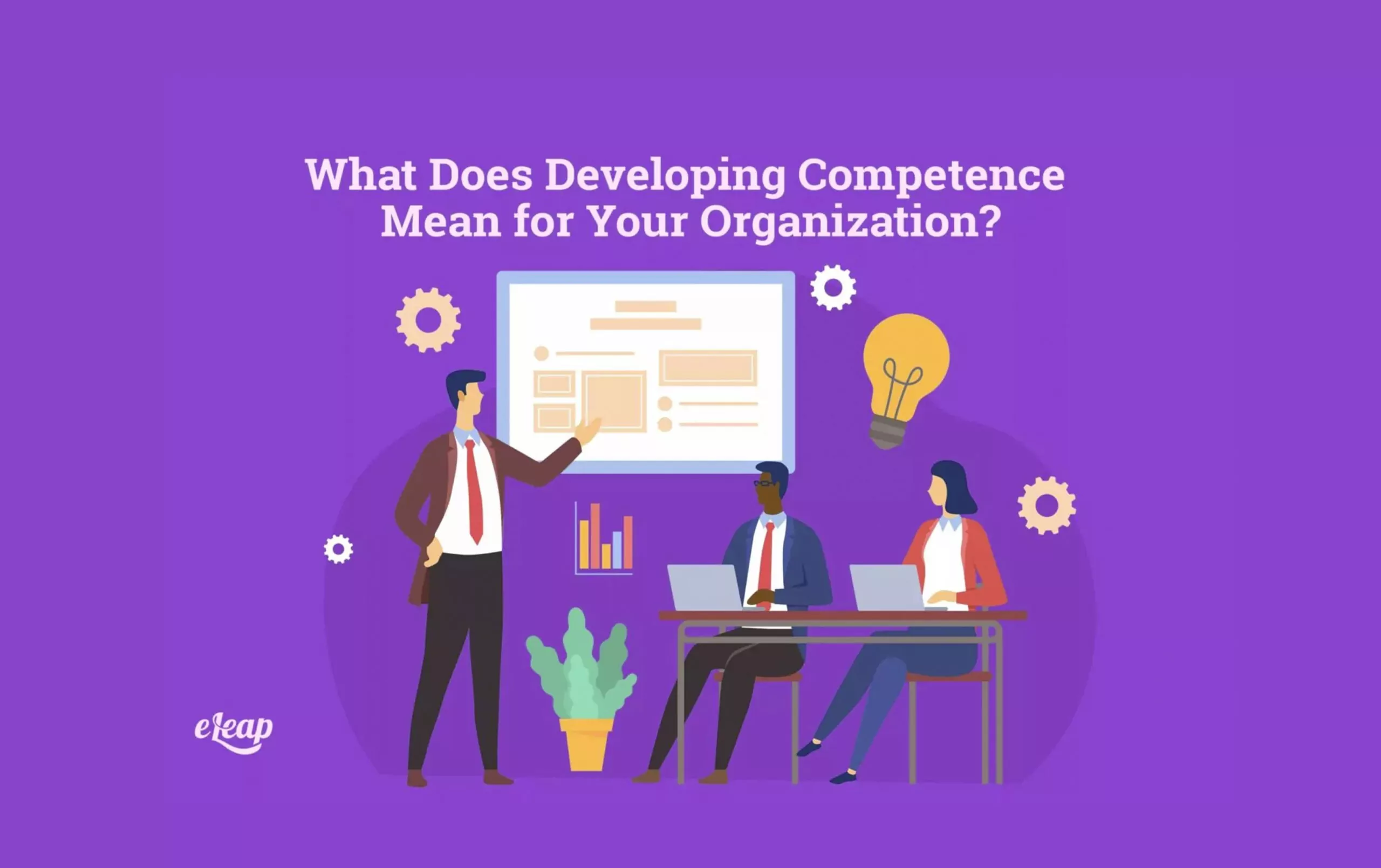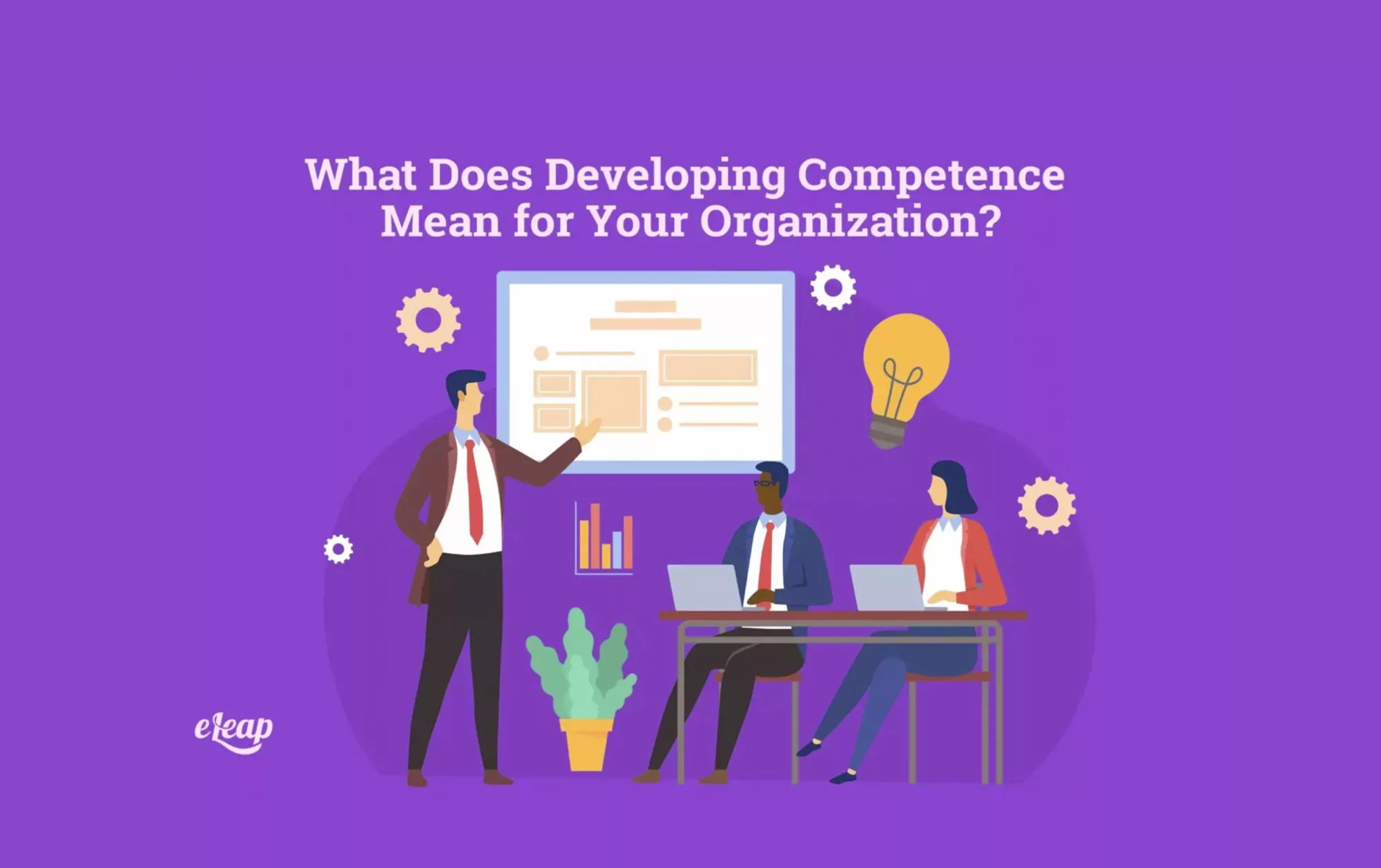What Does Developing Competence Mean for Your Organization?

Before discussing what developing competence means, we must define competencies. A mix of competency and skills occurs often, and while the two are similar, they are not the same.
Competency is a considerably broader category than a skill. This is the main distinction between the two terms. The term “skills” refers to a person’s physical and mental acts and tasks that they have mastered.

When detailing what competency is, you will find it is a combination of the following:
- The specialized expertise someone possesses in a given subject or profession.
- A collection of several skills.
- The person’s opinions, beliefs, and attitudes. This could be their disposition about work or how the obligation of a particular task plays out in their attitude.
To further clarify the difference between competency and skills, consider this: a collection of competencies serves as a catch-all for all the abilities, traits, and knowledge a person needs to perform at their best. Multiple capabilities could combine to form one competency.
Why Is Developing Competence Important?
We’ve determined that competencies are a quantifiable collection of abilities, traits, and qualities, that aid an employee’s successful work performance. Essentially, they establish the expected level of performance for each function or team.
Understanding a team member’s competencies can help you, as a manager, match them with the right job. This increases function and efficiency within your teams.
This also enables you to provide employees with a development plan for personal and professional growth. By utilizing competencies, you will raise the standard of coaching discussions among teammates and managers.
Prime Examples of Developing Competence
When understanding what competence looks like, consider the following examples. Look for these competencies within your current team to assess where your team stands and what changes need to be made.
- Adopting a business viewpoint when evaluating situations and making judgments.
- Having the capacity to comprehend how choices may affect internal business metrics or a client’s achievement of their goals.
- Having the ability to deal with various commercial and professional properly and responsibly.
- Accepting responsibility for the results, good or poor.
- Possessing the ability to problem solve.
- Understanding, deciphering, and ultimately contributing to resolving complex issues.
- Quickly reaching important choices and resolving team-related challenges. This includes influencing other people to make decisions rapidly, valuing progress, and keeping the team on track.
- Being adaptable and providing others with information to manage ambiguity.
- Being open to coaching and able to act on criticism right away. This can help you grow both personally and professionally and enhance your performance.
- Recognizing that daily, tactical work will only bring you so far.
- Possessing the strength and capability to delegate to your team to prioritize strategic work.
- Putting ideas into practice and displaying outcomes.
What Should You Focus on When Developing Competence?
It is easy to develop a long wish list of competencies at the organizational level. The fact of the matter is that the more detailed you get, the smaller pool of candidates you’ll have to pull from. It’s important to drill down your top priorities. Create a list of your top ten, and start from there.
At the individual role level, there’s a baseline set of competencies that a person should have to be successful. You can examine capabilities at the team level to identify ideal competencies. Then, determine what an individual can do to progress towards these competencies on their own.
A good rule of thumb would be a maximum of five individual roles or team-wide competencies. These competencies can branch off the ten organizational priorities.
When creating the list of competencies you are looking for, don’t do it by yourself. You need a committee working on this to ensure you have a wide span of competencies. Don’t just look to leadership for this committee. Take a look at your employees as a whole.
This team can also develop a guidebook that outlines what competencies individual and team roles need. This is why pulling individuals from all facets of your business is essential. Doing this will provide you with a well-rounded guidebook.
Introducing Your Competency Plan
When your competencies are developed, you will need to create a plan to introduce the concept to your team. Your committee can discuss the rollout as part of their duties and decide how it will work best for your team.
Understand that change is hard for many people. Team members may struggle initially. Use your committee to work with these individuals to assess what barriers they see and create a game plan to move forward.
Give a timeline for plan implementation. This allows for members that are struggling to talk with supervisors. As your deadline nears, assess if additional training is needed to ensure the individual and team will be ready on time.
Use Your Guidebook In the Hiring Process
Once you have nailed down the competencies at the role or team level, you can add questions to your guidebook for the hiring process. This allows your hiring team to look for those specific competencies when narrowing down the recruitment pool.
According to SHRM, focusing on competencies is increasingly used in the hiring market. This competency-based hiring technique has gained popularity among businesses in a wide range of industries, including many Fortune 500 companies.
It’s important to note that a list of competencies is not the same thing as a job description. A set of competencies specifies the skills required to do particular duties or functions. In contrast, a job description lists the results, responsibilities, and tasks required for a role.
Use Your Guidebook for Performance Reviews
Your guidebook can also assist in your one-on-one meetings when discussing goals, barriers, and performance reviews. It is an excellent measurement to determine when an employee is both struggling and succeeding. In addition, you might discover they have competencies for another team or role within the company that you have overlooked if not for the guidebook.
Benefits of Developing Competence
Developing competence can benefit your business, the team, and the individual employee. Not only can you work more efficiently toward the team’s goals, but the employee also has a well-defined path of how they need to accomplish their own goals.
There are a variety of benefits that developing competence will provide. A list of such benefits follows:
Improved competitiveness: An organization’s strategic goals and its personnel’s competencies can better align with one another if it engages in competency development. This improves the organization’s ability to adapt to changing conditions and boosts its competitive position.
Enhanced ability to make decisions: The establishment of competencies makes it easier to conduct an in-depth analysis of the workforce’s various strengths and limitations. With this knowledge, you can boost the effectiveness of your company’s processes and avoid the pitfalls of overstaffing or understaffing any specialized projects.
It is now simpler to recruit and keep existing employees: No company or organization wants to have a high turnover rate of employees. From the perspective of maintaining business continuity, it is essential to entice the appropriate individuals and convince them to remain loyal employees of the organization for an extended period.
The development of competencies makes this process simpler. You obtain an awareness of the skills and capabilities you require, while individuals who have the opportunity to develop themselves at your firm perceive you to be an enticing employer.
Brings an enhanced level of service: Do the members of your workforce possess the necessary competencies? It will be less difficult to provide service of an exceptionally high standard.
Your business results will improve, and your connection with your customers will be stronger due to the improvement in the quality of your services and products.
This is vital today when individualization and high service levels are the primary motivating factors behind the additional value and client loyalty.
Improved safety equals fewer risks: If your organization has production lines. These will be safer from the beginning to the end once all employees have a clear awareness of the competencies required. The result is that there will be fewer accidents at work and overall greater safety.
Being ready for what lies ahead: Is one of your workers getting close to the age when they can retire? Or has someone suddenly left your organization without giving a reason?
You can get high-potential employees ready for the role they will eventually fill through competency development. This guarantees that you will always have the correct successor on board.
Development of Staff: Developing one’s competencies is an efficient method to develop personal and professional growth. The strategy provides workers with a greater grasp of their own potential. It makes it possible for them to hone existing abilities and build new ones in a manner that is more strategically focused.
Summary
Understanding what competence is and the benefits of developing competence will put your business on a path to success. Focus on the main priorities and streamline hiring and review processes to reach your goals more quickly. Implementation of a competency-based program can also increase employee morale and productivity. The eLeaP continuous performance management system provides organizations with powerful options to attract and retain high caliber team members.